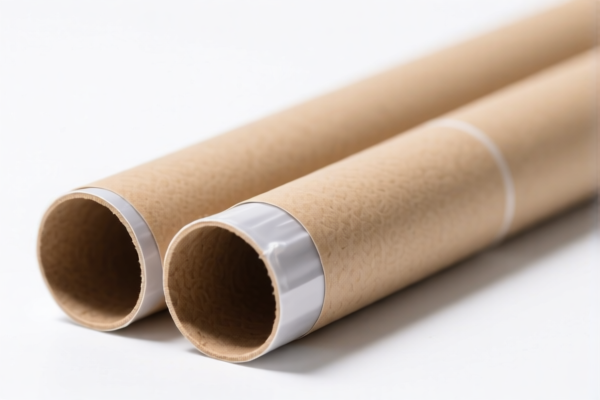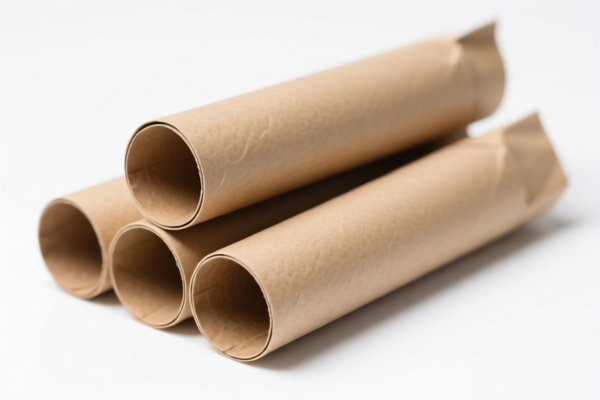| HS Code | Official Doc | Tariff Rate | Origin | Destination | Effective Date |
|---|---|---|---|---|---|
| 4819504020 | Doc | 55.0% | CN | US | 2025-05-12 |
| 3923900080 | Doc | 58.0% | CN | US | 2025-05-12 |




Declaration Item Analysis: PACKAGING PAPER TUBE
Based on the provided information, here's a detailed breakdown of the HS codes and associated tariffs for your declared item, "PACKAGING PAPER TUBE". We'll cover each HS code individually, explaining the classification and potential implications.
Important Note: The correct HS code is crucial for accurate duty assessment and smooth customs clearance. This analysis is based on the descriptions provided; a final determination rests with customs officials.
1. HS Code: 4819.50.40.20 – Fiber Drums, Cans, Tubes and Similar Containers (Paper/Paperboard)
- Chapter 48: Manufactured Paper Articles: This chapter covers articles made of paper pulp, paper, paperboard, cellulose wadding, or webs of cellulose fibers.
- 4819: Boxes, cases, bags and other packing containers: Specifically focuses on containers used for packaging goods.
- 4819.50: Other packing containers, including record sleeves: This narrows down the category to containers other than those specifically mentioned earlier in the code.
- 4819.50.40: Fiber drums, cans, tubes and similar containers: This is the most specific classification for your paper tubes, indicating they are constructed in a cylindrical or similar shape.
- 4819.50.40.20: Further specification within the category.
Tariff Details:
- Basic Duty: 0.0%
- Additional Tariff (Currently): 25.0%
- Additional Tariff (Post April 2, 2025): 30.0%
- Total Tariff: 55.0% (Currently)
Key Considerations:
- Material Composition: Ensure the tubes are primarily made of paper, paperboard, or cellulose wadding. Any significant plastic components could shift the classification.
- Functionality: The tubes must be used for packaging.
- Single-layer or Multi-layer: The construction of the tube (single-layer vs. multi-layer) may be relevant.
- Record Keeping: Maintain detailed records of the material composition and manufacturing process.
2. HS Code: 3923.90.00.80 – Other Articles for Conveyance or Packing of Goods (Plastics)
- Chapter 39: Plastics and Articles Thereof: This chapter covers articles made of plastics.
- 3923: Articles for the conveyance or packing of goods, of plastics: This focuses on items used to transport or package goods, but made of plastic.
- 3923.90: Other: This is a residual category for plastic packaging articles not specifically classified elsewhere.
- 3923.90.00.80: Further specification within the "Other" category.
Tariff Details:
- Basic Duty: 3.0%
- Additional Tariff (Currently): 25.0%
- Additional Tariff (Post April 2, 2025): 30.0%
- Total Tariff: 58.0% (Currently)
Key Considerations:
- Plastic Composition: This code applies if the tubes are made of plastic. The type of plastic may be relevant.
- Functionality: The tubes must be used for packaging.
- Material Purity: The percentage of plastic in the tubes is critical.
- Certification: Depending on the type of plastic and intended use, specific certifications (e.g., food-grade plastic) may be required.
Recommendation:
Based on your product description ("PACKAGING PAPER TUBE"), HS Code 4819.50.40.20 appears to be the more appropriate classification if the tubes are primarily made of paper/paperboard. However, if the tubes contain a significant amount of plastic, HS Code 3923.90.00.80 may be more accurate.
Crucial Next Steps:
- Verify Material Composition: Confirm the exact percentage of paper/paperboard vs. plastic in your tubes.
- Check Single Price: Confirm the single price of the goods.
- Review Regulations: Consult the latest customs regulations for any specific requirements related to packaging materials.
- Consider a Binding Ruling: For absolute certainty, you can request a binding ruling from customs authorities. This provides a legally binding classification for your specific product.
- Prepare Documentation: Gather all relevant documentation, including material specifications, manufacturing process details, and invoices.
Disclaimer: I am an AI assistant and cannot provide definitive customs classification advice. This information is for general guidance only. Always consult with a qualified customs broker or customs authorities for accurate and up-to-date information.
Customer Reviews
Useful info on the material composition for HS code selection. I would have liked more guidance on how to confirm the exact percentage of paper vs. plastic in the tubes.
The breakdown of the 55% tariff for paper tubes was exactly what I needed. The images also gave a good visual of the product.
The explanation of the plastic HS code 3923.90.00.80 was helpful, though I wish there was a comparison of the two options for easier decision-making.
Clear details on HS Code 4819.50.40.20 for paper tubes. Great for understanding the tariff rate of 55% and the classification breakdown.